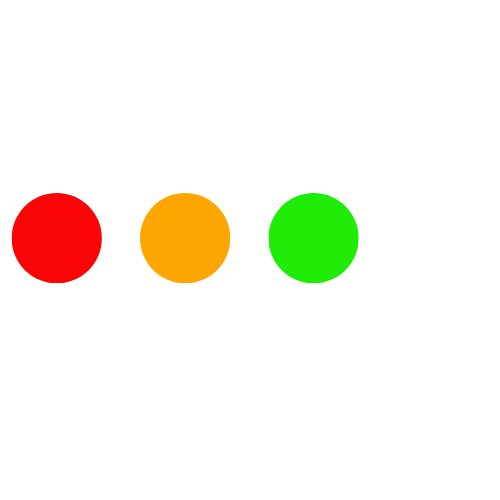Racket Revolution
How Pickleball and Padel Are Serving a Threat to Tennis
It’s official: tennis has some company. While Wimbledon and Roland Garros still hold prestige, two upstart racket sports - pickleball and padel - are smashing their way onto courts around the world, capturing new players, younger fans, and major investment. Once seen as fringe sports, they’re now booming in participation, popping up in gyms, parks, and even luxury resorts. And tennis, for the first time in decades, may be feeling the pressure.
Pickleball: From Retirement Communities to National Obsession
Pickleball, a quirky hybrid of tennis, ping pong, and badminton, has exploded in popularity — especially in the U.S., where it’s the fastest-growing sport for the third year running. Initially mocked as a slow-paced game for retirees, it’s now attracting everyone from Gen Z influencers to pro athletes. Celebrities like LeBron James, Tom Brady, and Naomi Osaka have invested in professional pickleball leagues.
Why the surge?
Smaller courts and slower balls make it easier to pick up than tennis.
Fast-paced, social, and surprisingly competitive.
Requires less space and physical demand, perfect for urban areas and older players.
Pickleball’s growth is so aggressive that in some U.S. cities, tennis players are protesting the conversion of courts. Real estate developers and fitness centers are prioritizing pickleball infrastructure over traditional tennis due to demand.
Padel: Europe’s Tennis Disruptor
Meanwhile, padel — a tennis-squash hybrid born in Mexico and beloved in Spain and Latin America, is taking Europe by storm and growing globally at breakneck speed. Played in an enclosed glass court with solid paddles and a low-pressure ball, padel is easy to learn and incredibly engaging.
Major soccer stars like Lionel Messi, Zlatan Ibrahimović, and Neymar have publicly embraced it, while clubs and luxury venues across Europe are replacing tennis courts with padel courts.
Why the padel craze?
It’s a doubles-only game, making it more social and beginner-friendly.
Rallies are longer and easier to sustain than in tennis.
Equipment is simple, and the learning curve is shallow.
Spain now boasts more registered padel players than tennis players, a staggering statistic for a country that produced Rafael Nadal and Carlos Alcaraz.
The Threat to Tennis
Tennis isn’t going away - yet. But it’s definitely being outpaced in some key areas:
Accessibility: Tennis is technically difficult and can take years to master. Padel and pickleball offer instant gratification.
Space & infrastructure: A padel court is smaller than a tennis court. A pickleball court fits inside half a tennis court. That makes them attractive to real estate developers, municipalities, and fitness clubs with limited space.
Demographics: Tennis struggles to attract and retain younger and recreational players, especially in regions where coaching is expensive or access is limited.
And the tension is real. Around the world, tennis players are protesting the reallocation of courts and time slots. In South Africa, the U.K., and Australia, club debates are raging over which sport should get priority. Even pro players like Nick Kyrgios and Jack Sock have publicly expressed interest in pickleball - a cheeky jab at tennis’s establishment.
A Wake-Up Call or a Cross-Court Winner?
Some in the tennis world see this moment not as a threat, but a wake-up call. Tennis organizations are pushing for more community programming, accessible coaching, and hybrid events that welcome all racket sports. In fact, in some places, tennis clubs are adding padel and pickleball courts under the same umbrella, hoping to keep players in the same ecosystem. There are various ways that tennis can stay relevant and thrive and can adapt strategically without losing its core identity.
Promote Shorter, More Accessible Formats
Introduce more Fast4 or Tie-Break Tens-style events that offer quicker matches.
Encourage social tennis leagues and short-format community events that lower the barrier to entry and time commitment.
Invest in Multi-Use Facilities
Convert underused or old tennis courts into hybrid spaces for tennis, padel, and pickleball.
Promote dual-sport memberships to keep tennis players engaged even if they’re exploring other sports.
Partner with clubs to include mini tennis courts or rebound walls for juniors and beginners.
Lower Entry Barriers
Promote "easy tennis" programs for absolute beginners with soft balls, smaller courts, and lighter racquets (like Red, Orange, Green ball programs).
Offer group coaching and low-cost drop-in sessions to compete with the casual nature of padel/pickleball.
Embrace Tech and Gamification
Add augmented reality or interactive walls, similar to Padel clubs.
Use apps for match-making, rankings, and virtual coaching to enhance the social and competitive experience.
Market Tennis as a Lifestyle Sport
Highlight benefits: full-body fitness, longevity, and prestige.
Launch ambassador programs with influencers, not just pros.
Position tennis as a cool, stylish, and modern activity, especially targeting Gen Z with visual content.
Create Community-Focused Events
Organize family-friendly and festival-style tennis days with music, food, and social doubles tournaments.
Encourage inter-generational play, like parent-kid doubles or mixed-ability leagues.
Collaborate, Don’t Compete Blindly
Acknowledge and respect padel/pickleball growth, while showcasing tennis as a long-term skill progression.
Offer combo sport packages or try-it-out events (e.g., Padel in the morning, Tennis in the evening).
Educate players on how skills from padel/pickleball translate well to tennis, encouraging cross-over.
Rejuvenate Coaching and Clubs
Train coaches to be more engaging and versatile with multi-sport knowledge.
Modernize club culture — more open, less elitist, with music, social areas, and flexible booking systems.
And there’s the financial argument: more racket sports mean more players, more gear sales, and more media interest. A rising tide may lift all rackets.
Final Serve
The pickleball and padel wave is here — and it’s not just a passing trend. With strong social elements, lower barriers to entry, and surging cultural relevance, they’re redefining what it means to play a racket sport in the 21st century.
For tennis to maintain its footing, it may need to shed some of its elitist image, embrace innovation, and welcome the newcomers to the court.
After all, there’s room on the court for everyone — just not always on the same one.
